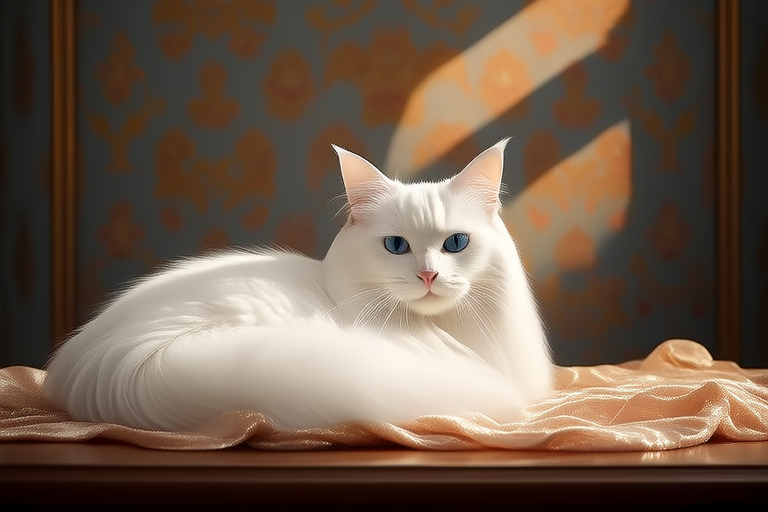The Turkish Angora: A Feline Legend
The Turkish Angora, with its regal presence and silky coat, has captivated the hearts of cat lovers for centuries. Originating from the Ankara region in central Turkey, this breed has a rich history intertwined with mythology, science, and culture. This article delves into the origins, characteristics, and myths surrounding the Turkish Angora, offering insights into its genetic makeup and care requirements.
Historical Significance
The Turkish Angora’s roots trace back thousands of years, with evidence suggesting its existence during the time of ancient civilizations. These elegant felines were often associated with royalty and were considered sacred by the Ottoman Empire. The breed was revered for its beauty and agility, making it a prized possession among nobility. Legends and tales about the Turkish Angora abound, many attributing mystical powers to these cats, enhancing their allure.
Characteristics of the Turkish Angora
The Turkish Angora is distinguished by its long, silky coat, which comes in a wide array of colors, including white, black, red, blue, and tortoiseshell. Their eyes can be green, blue, or amber, adding to their mesmerizing appearance. These cats are known for their playful and affectionate nature, making them excellent companions. They are highly intelligent and enjoy interactive play, which keeps their minds sharp and bodies agile.
Genetic Factors Contributing to Fur
The unique qualities of the Turkish Angora’s coat are primarily due to its genetic makeup. Cats have two genes responsible for fur length: the short hair gene (S) and the long hair gene (s). The Turkish Angora carries the recessive long hair gene (ss), resulting in its luxurious coat. Additionally, the breed’s coat color is determined by various alleles within the c, C, and ch loci. This combination allows for a diverse range of colors and patterns.
Popular Myths About the Breed
One enduring myth about the Turkish Angora is that it possesses the ability to purr at frequencies capable of breaking glass. While this is scientifically impossible, the deep, resonant purring of the Turkish Angora does contribute to its mystique. Another myth suggests that the breed can predict the future, an attribute stemming from their keen senses and intuitive behavior. These tales add to the breed’s magical allure, captivating both believers and skeptics alike.
Cultural References and Tales
In Turkish folklore, the Turkish Angora is often depicted as a guardian spirit, watching over homes and families. One tale recounts a Turkish Angora saving a village from a flood by leading villagers to higher ground. Such stories highlight the breed’s intelligence and loyalty, further cementing its place in Turkish culture. Modern-day fascination with the Turkish Angora continues, with numerous books, films, and social media accounts dedicated to these majestic cats.
Tips for Caring for the Turkish Angora’s Coat
Maintaining the health and appearance of a Turkish Angora’s coat requires regular grooming and proper nutrition. Brushing your cat daily helps remove loose hair and prevents matting. Use a soft-bristled brush designed for long-haired cats to avoid damaging the delicate fur. Additionally, providing a balanced diet rich in essential fatty acids supports skin health and promotes a shiny coat. Regular veterinary check-ups ensure overall well-being and address any potential issues early.
Conclusion
The Turkish Angora is more than just a beautiful cat; it is a living piece of history and folklore. Its origins, genetic makeup, and cultural significance make it a fascinating subject for exploration. Whether you’re a seasoned cat enthusiast or simply curious about these magnificent creatures, the Turkish Angora offers a wealth of knowledge and inspiration. By understanding and respecting the breed’s unique qualities, we can continue to appreciate and cherish these enchanting felines for generations to come.
